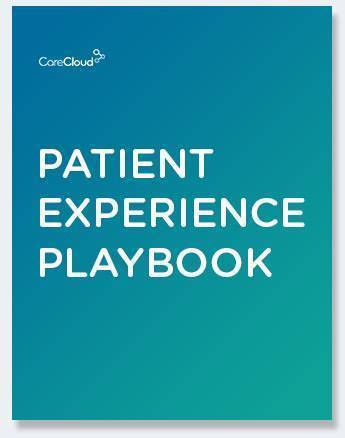For many physicians, synergizing patient encounters and EHR systems has been akin to mastering the trick of rubbing your belly while patting your head. On one hand is the patient’s need for a strong connection with their doctor, while on the other is the mandate to spend encounter time on EHR documenting, diagnosing, and ordering. It’s no surprise that physicians have expressed concern that computer time during visits is eclipsing face-time with patients.
As it turns out, patients are affected by EHRs – but generally in a positive way. CareCloud’s 2016 Patient Experience Index survey found that 80 percent of patients reported that EHRs improved or didn’t impact their experiences with their doctors, and nearly one-third said that their care had improved thanks to EHRs. This echoed the conclusions of a 2015 Veterans Affairs Medical Center study, which found that patients expressed high levels of satisfaction with clinicians who used EHRs.
Physicians in large group practices are also feeling the EHR glow, with more than two-thirds reporting being satisfied overall, and similar numbers reporting positive impacts on practice productivity and physician documentation. The Centers for Medicare & Medicaid Services (CMS) note that, at the end of 2015, 64 percent of office-based physicians were using EHR systems and 98 percent of hospitals were on board. Those numbers may reveal why solo practitioners and small practices seem to be having a more difficult time with the transition; physician EHR satisfaction is halved among doctors who have been using their systems for three years or less. Interestingly, physicians who use cloud-based systems are more satisfied with their EHRs than those who use first-generation or legacy systems, likely because of increased interoperability and the capacity of vendors to seamlessly update EHRs to conform to an ever-changing regulatory landscape.
As seen through a range of lenses, EHR systems have proven their value. A variety of studies attest to the halving of medication errors thanks to computerized physician order entry (CPOE), the improvement of care practice guidelines and documentation due to clinical decision support (CDS) reminders and alerts, and better health outcomes as a result of CDS and patient-targeted alerts. Even paid malpractice claims to drop off for doctors who use EHRs rather than paper-based systems.
Still, in a consumer-oriented healthcare environment that prioritizes the patient experience, the effort required to foster physician-patient connections can seem at odds with the time spent interacting with an EHR system. Some studies have suggested that the two key factors in balancing EHRs and patient-centered care are strong communication skills and the EHR’s ease of use. Training to strengthen providers’ abilities to make eye contact and speak directly to patients during a visit – while also attending to documentation, CDS, and CPOE – could prove helpful in bridging communication gaps. Arguably more important is the EHR itself. It makes sense, for example, that clean and intuitive user interfaces that require fewer clicks and scrolls, less laser-focused concentration, and less time overall, wind up creating more opportunities for the interpersonal connections that fuel positive patient experiences.

Download the Patient Experience Playbook


